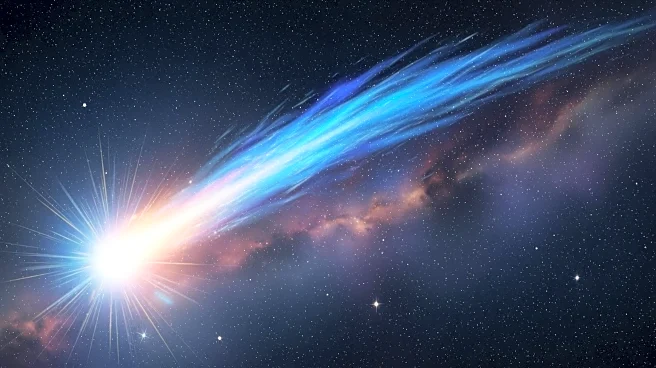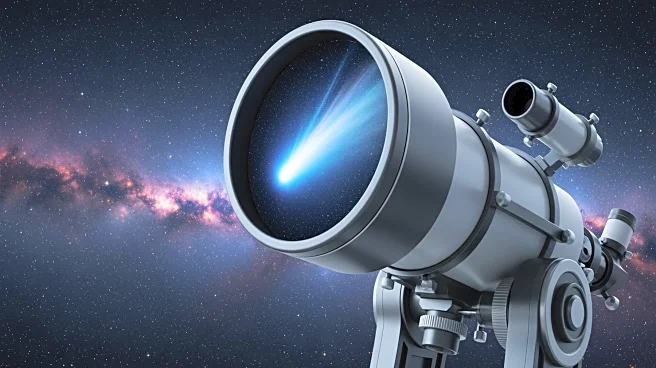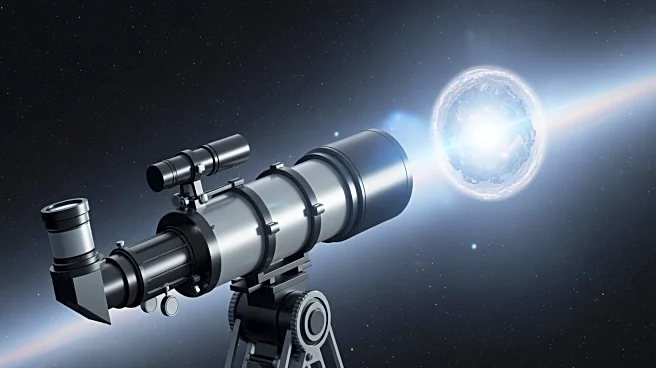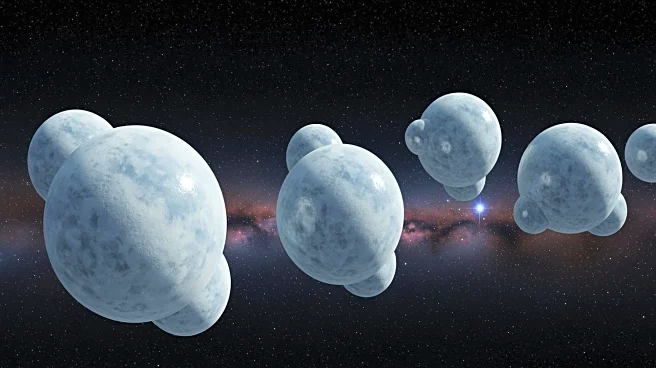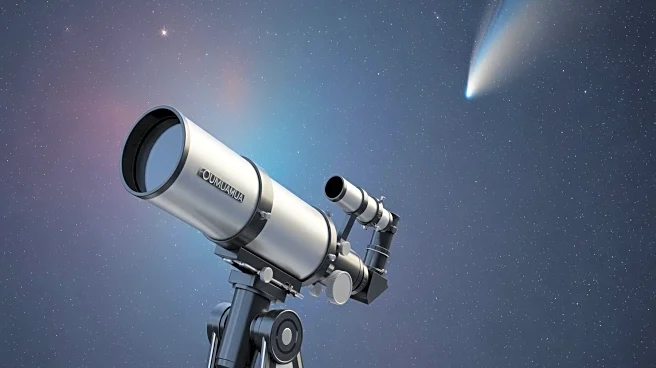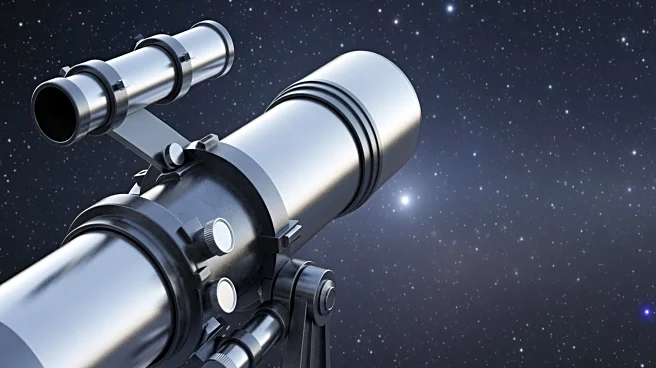What's Happening?
NASA scientists are closely monitoring the interstellar comet 3I/ATLAS, which has entered the Solar System and exhibited a surge of energy and gas emissions that are unlike any previously observed. The
comet, traveling at over 200,000 km/h, is the third confirmed interstellar object to visit the Solar System, following ʻOumuamua and Borisov. Observations from the James Webb Space Telescope have revealed a high ratio of carbon dioxide to water vapor in the comet's coma, suggesting unique chemical properties. The comet's trajectory and emissions have sparked interest and speculation among scientists, with some considering the possibility of unusual or communicative behavior, although NASA has dismissed claims of alien origin.
Why It's Important?
The arrival of 3I/ATLAS offers a rare opportunity for scientists to study material from beyond the Solar System, potentially providing insights into the formation of planets around distant stars. The comet's unique chemical composition and behavior could challenge existing theories about cometary activity and interstellar objects. As it approaches its closest point to the Sun, researchers hope to gather more data that could expand our understanding of the galaxy and the processes that govern planetary formation. The comet's emissions and trajectory may also provide clues about the conditions in its parent star system, offering a glimpse into the diversity of planetary systems in the universe.
What's Next?
As 3I/ATLAS nears its perihelion, scientists expect it to become more active, potentially allowing for further study of its emissions and chemical makeup. NASA's Europa Clipper spacecraft may intersect with the comet's ion tail, providing an unprecedented opportunity to sample particles from another star system. Telescopes across Earth and space will continue to track the comet's progress, aiming to gather more data on its behavior and composition. The scientific community remains focused on understanding the comet's origins and implications for planetary science.
Beyond the Headlines
The unusual activity of 3I/ATLAS has sparked public interest and speculation about its nature, with some commentators suggesting it could be sending signals. However, experts emphasize that the evidence points to natural cometary processes, albeit extreme ones. The comet's behavior challenges scientists to reconsider their understanding of interstellar objects and the conditions that lead to such activity. The study of 3I/ATLAS may also contribute to broader discussions about the potential for life and communication in the universe, even as current evidence supports natural explanations.
